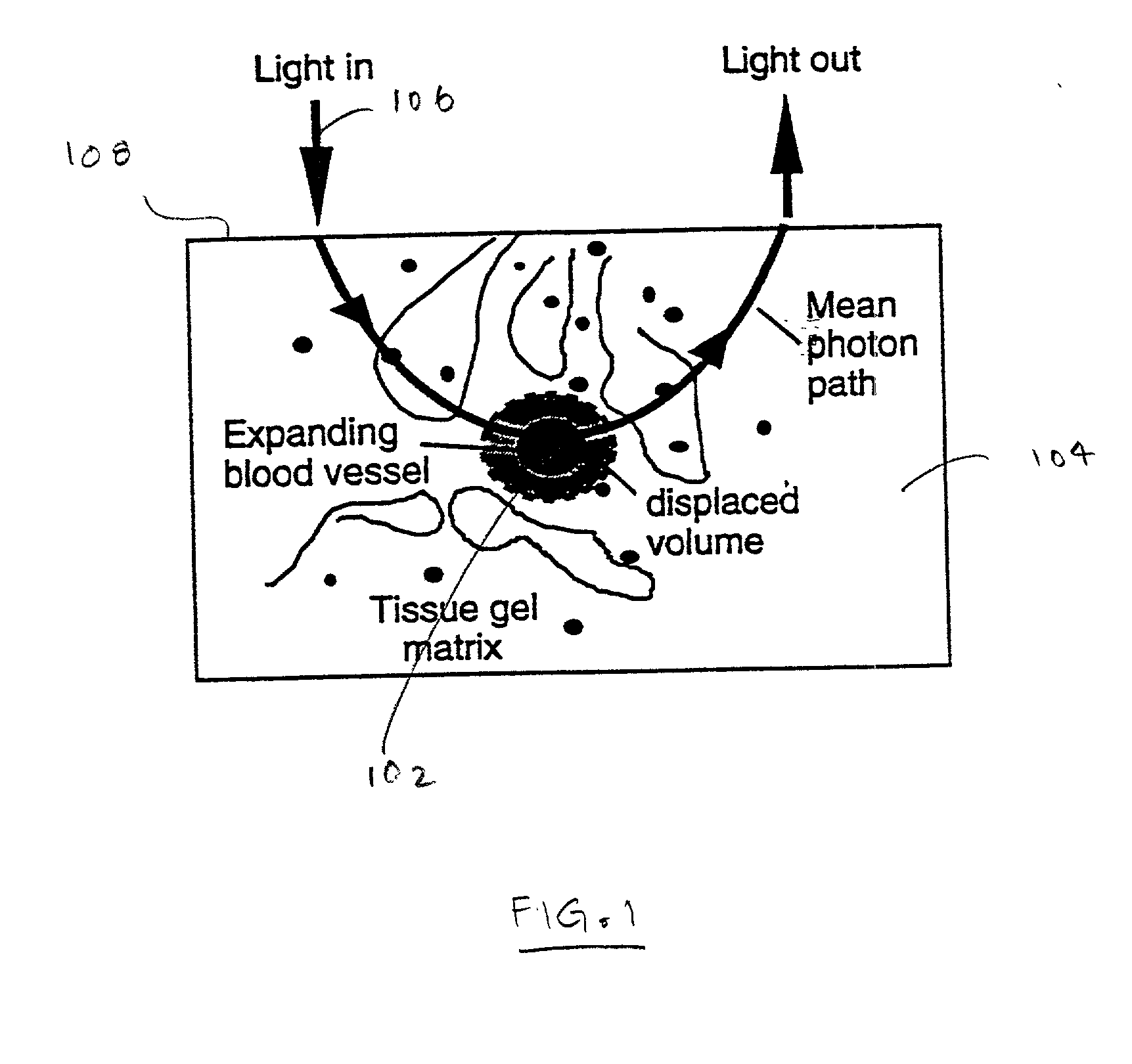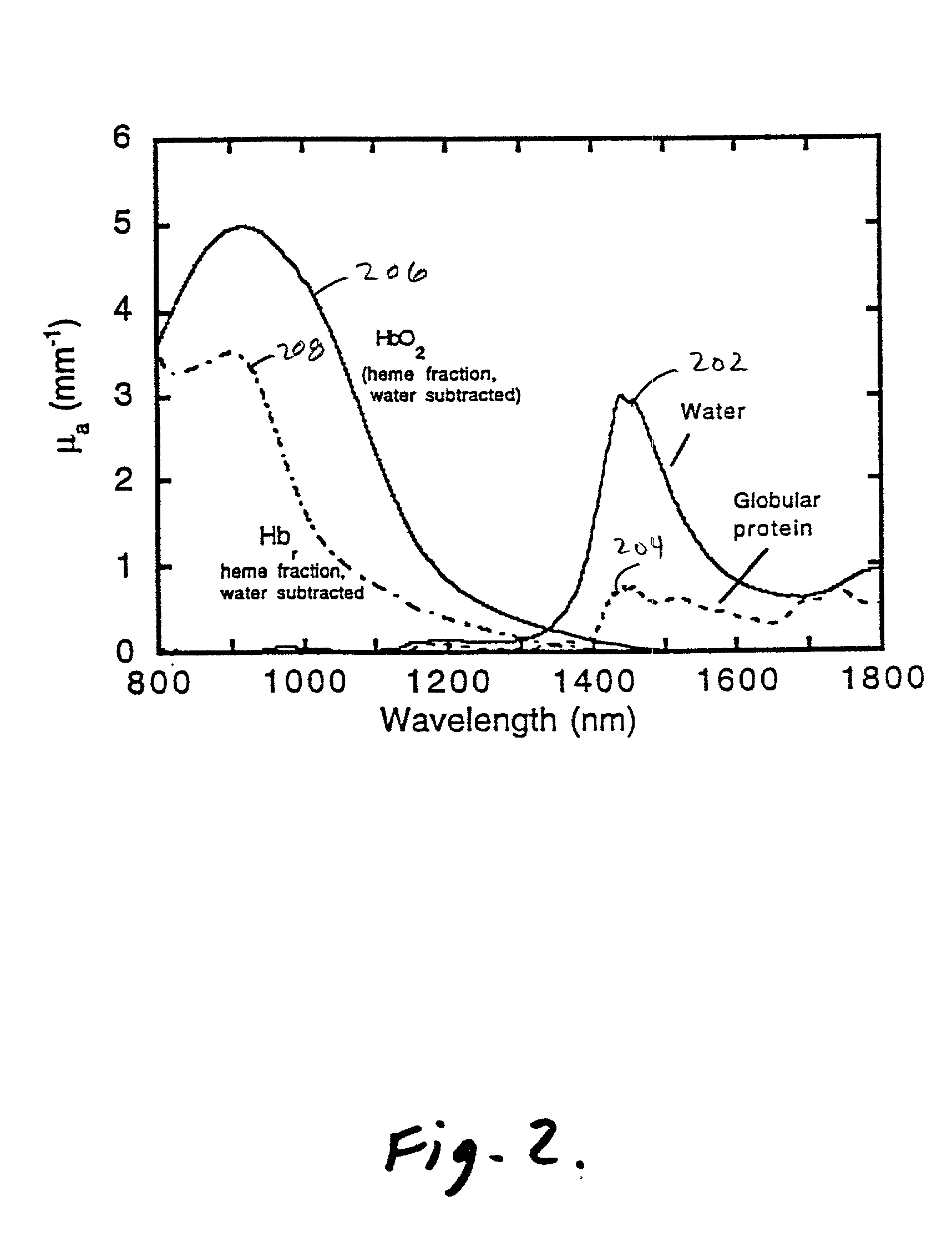Method and apparatus for improving the accuracy of noninvasive hematocrit measurements
- Summary
- Abstract
- Description
- Claims
- Application Information
AI Technical Summary
Problems solved by technology
Method used
Image
Examples
Embodiment Construction
[0026] To understand the principles that underlie the invention, first consider a small blood vessel 102 embedded in the skin 104 on which light 106 impinges from the surface 108 as shown in FIG. 1. A fraction of the incident photons scatter through the blood before being captured by the detector. When the vessel 102 expands its volume, the probability of photons being absorbed or scattered by the blood inside the vessel increases. The absorption of the light that occurs within the volume probed by the light that reaches the detector (the effective sample volume) can be described approximately by a modified form of the Beer-Lambert law, which quantifies the diffusely reflected or transmitted intensity I before and after expansion of the vessel by an increase in the volume of blood .DELTA.V, 1 ( Before expansion ) log ( 1 / I ) dc = _ V T ( a bV b +a tV t) ( 1 ) ( After expansion ) log ( 1 / I )ac + dc = _ V T [ a b( V b + V ) +a t( V t -V )] ( 2 )
[0027] where {overscore (l)} is the ...
PUM
 Login to View More
Login to View More Abstract
Description
Claims
Application Information
 Login to View More
Login to View More - R&D
- Intellectual Property
- Life Sciences
- Materials
- Tech Scout
- Unparalleled Data Quality
- Higher Quality Content
- 60% Fewer Hallucinations
Browse by: Latest US Patents, China's latest patents, Technical Efficacy Thesaurus, Application Domain, Technology Topic, Popular Technical Reports.
© 2025 PatSnap. All rights reserved.Legal|Privacy policy|Modern Slavery Act Transparency Statement|Sitemap|About US| Contact US: help@patsnap.com



